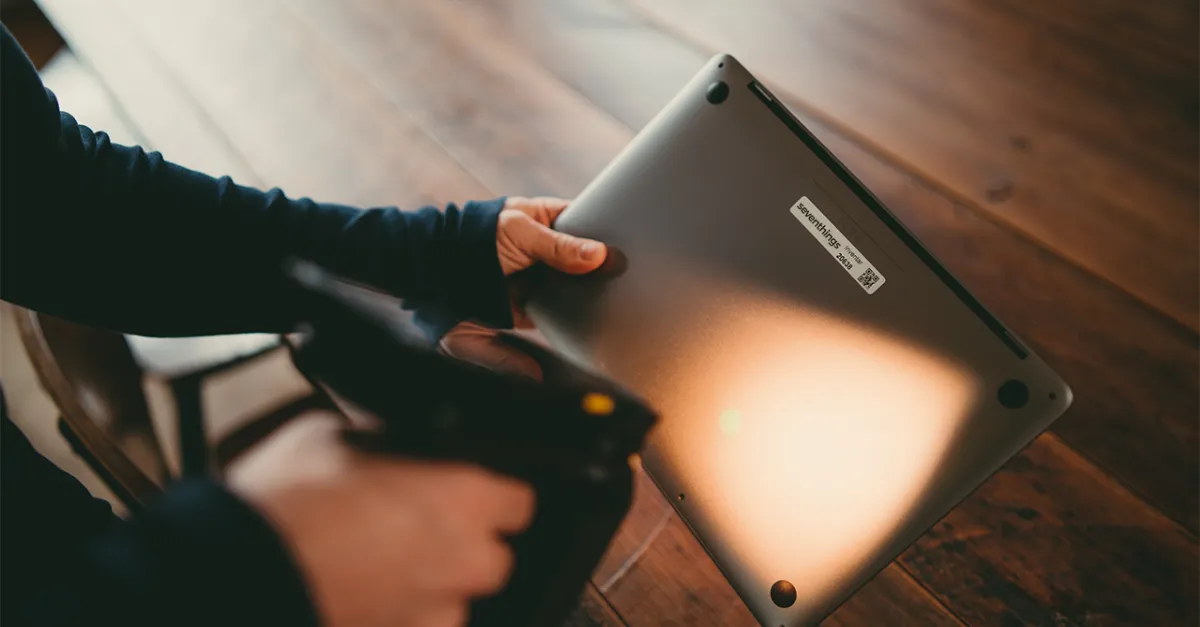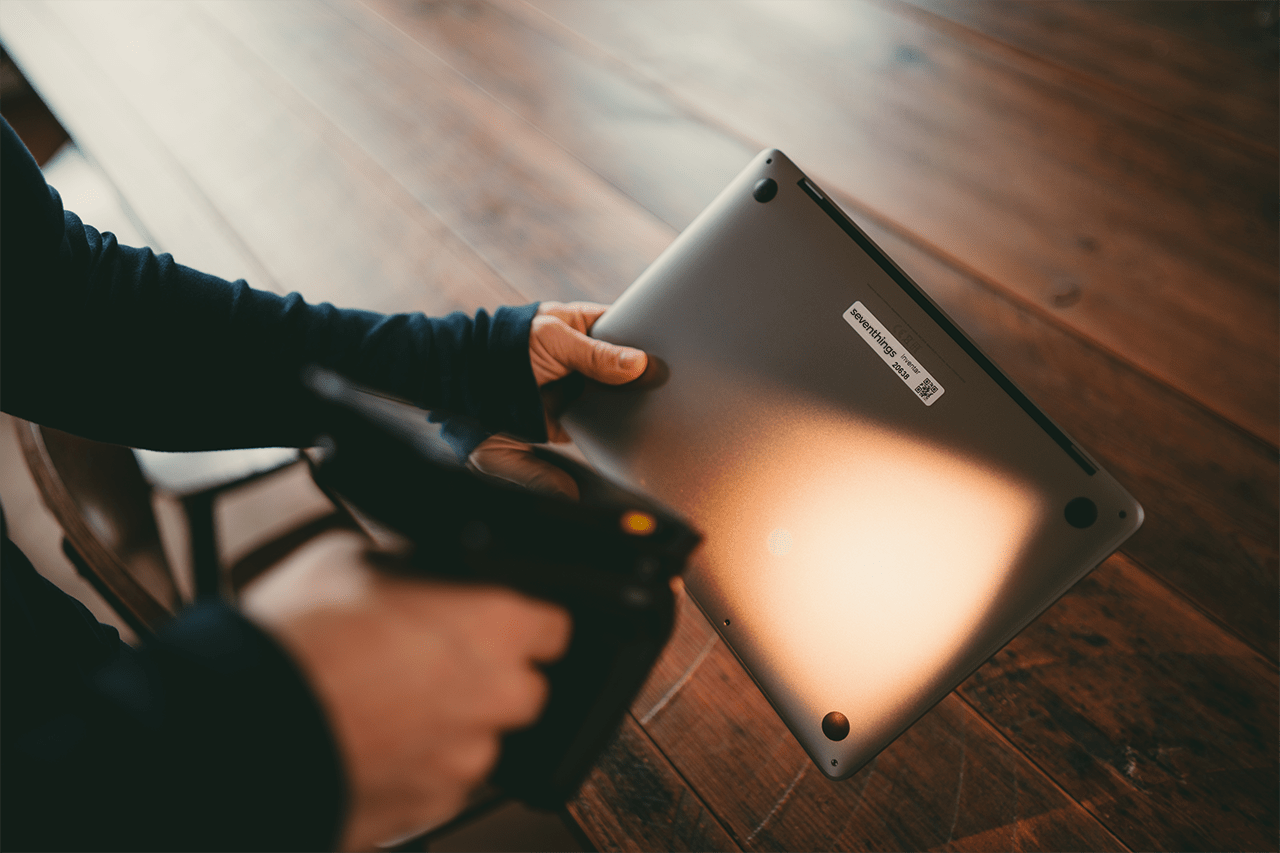A barcode ... what is it and how does it work? Most people think of the barcode that is scanned at the supermarket checkout and then put in the shopping bag. So the barcode as an industrial standard helps to identify products exactly. It is the identifier and access to the databases with all the important information such as price, product name, category, quantity, and so on. - so it's more than just a few strokes. Therefore, here is an overview of the different types of barcodes and how we use barcodes to keep inventory as efficient as possible. Here you can learn everything important about:
... what makes Quick Response (QR) Codes so effective,
... and which barcodes seventhings uses for digital inventory.
If you want to manage your inventory effectively, it is advisable to establish a quick, easy and unique identification of all items. Seventhings has developed a process to help you do this. We equip you with labels, smartphone apps and an intuitive web interface so you can quickly & effectively manage your inventory. What you need to know to manage your inventory, we have compiled in our blog.
>>> This way to get "more information about industrial scanners"
A very important point in digital inventory management are the labels. You simply stick these on all inventory items so that you can then read them with a smartphone or special industrial scanners to record and clearly identify the item. A barcode is printed on these labels, which is then read by a terminal device.
>>> We have compiled everything you need to know about "about a good asset management software"
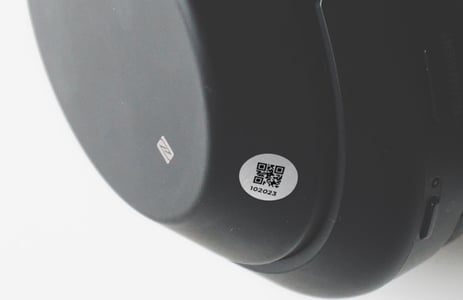
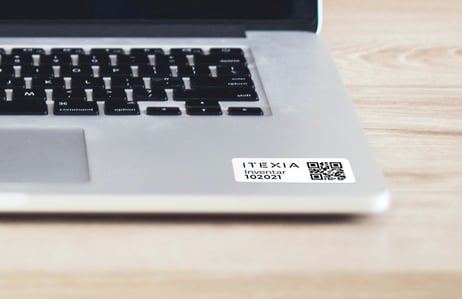
One-dimensional code
This code consists of black and white barcodes. Here, all information is stored in a series of lines on a light background. This code begins with a start and a stop sign and the information is defined by the different widths of the parallel bars and gaps. The data structure is ISO-certified. We will now explain the most important 1D codes:
Code 39
Structure: In very simple terms, numbers (from 0 - 9), letters and some symbols can be covered with Code 39. Up to a length of 49 characters, this type of barcode can be used. Put simply, each character has its own pattern of bars and gaps.
Examples of use: The main field of application is probably factory automation, especially in the automotive industry Code 39 is standard, as letters can also be mapped. The AIAG (Automotive Industry Action Group) has even standardised Code 39 in the USA.
Code 128
Structure: In addition to what can be mapped in Code 39, it can also distinguish between upper and lower case and map certain control characters (CR, STX, etc.). Code 128 allows mapping with minimum size as long as only numeric characters are used.
Examples of use: We all know Code 128 from the supermarket, as it is mainly used in the food industry. Code 128 is also common and widely used in medicine.
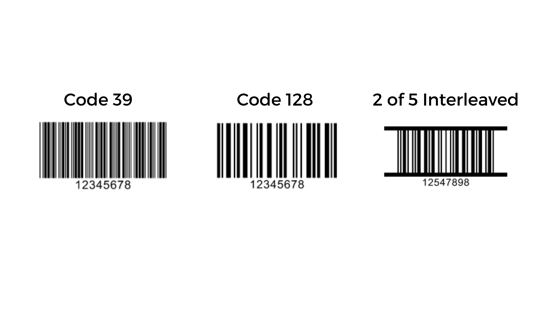
Interleaved 2 aus 5
Structure: In contrast to the above-mentioned codes, only digits from 0 to 9 can be represented in the "2 of 5 Interleaved"; furthermore, the number of digits must be even and is therefore preceded by a "0" or a check digit is appended.
Examples of use: Since this type of barcode can be read by almost all barcode scanners, it is often used in logistics and by parcel services. Serial numbers and batch numbers are also frequently represented internally.
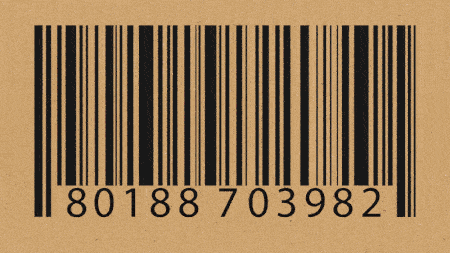
Universal Product Codes (UPC)
Structure: This is also a barcode that uses only numbers.
Examples of use: Format traditionally used in the USA. So desirable format for product sales in the USA.
International Article Number
Structure: The international counterpart to the UPC format. Also called Global Article Number. Formerly known as the European Article Number (EAN), it has been known as the Global Trade Item Number (GTIN) since 2009.
Examples of use: Used pretty much everywhere and on every product. Whether it is the ISBN code of a book or any trade product (clothing, food, stationery, electronics, etc.).
Two-dimensional codes
These codes usually consist of square patterns. The best-known example is the QR code, which is widely used due to its readability via mobile devices, for example, and can thus be used by practically anyone with a smartphone. The main advantage is the significantly higher density of information that can be read. This is why they are also widely used in industrial applications. A distinction is made between stacked, matrix or dot codes.
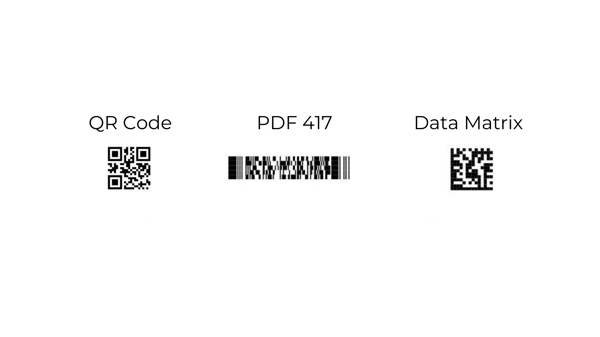
PDF 417
Structure: A PDF 417 code can be understood as a bidirectional "D barcode". It also has a variable length and can contain numeric and alphanumeric characters. The use of a specific algorithm for reading is useful. This allows the code to be read even if it is 50% destroyed.
Examples of use: We all find the PDF 417 code on boarding passes, some packages & also on official documents like driving licences.
Data Matrix
Structure: Described as a high density bar code symbol, a Data Matrix Code encodes text, numbers, files and data bytes. Since 2000, this code has been standardised and recognised by ISO/IEC 16022.
Examples of use: Usually used on smaller packaging, but posters, various electronic items and packaging also use this type of code.
Quick Response (QR) Code
Structure: Probably the best known code as it is constructed in such a way that not only scanners but also any camera can read it. It has the highest character capacity and, like the Data Matrix and the PDF 417 code, can use all numeric and alphanumeric characters as well as data bytes. How to read QR codes in an image has been summarised very well by the online platform heise.de in this article.
Examples of use: Any online and app payments, AR applications, website login, virtual shopping, the QR code makes pretty much everything possible.

Example of a label with QR code from seventhings
Why does seventhings use barcodes and which barcodes do we use?
Barcodes are super helpful for inventory. Instead of tedious searching for serial numbers or other identification features, all inventory items can be easily identified. With stick-on labels and the appropriate sticking guidelines, a lot of time can be saved during inventory.
To make it as easy as possible, all seventhings price packages include the labels in the price - so there are no additional costs here. The labels are equipped with QR codes and are printed with our customers' logo. This has the advantage that the inventory can be carried out with almost any smartphone. When used correctly, a scan is possible even with damaged labels, if up to 30% of the code area is damaged.
Would you like to try out how easy asset tracking with seventhings can be? Then we invite you to a free 14-day test period.
seventhings - tag it, scan it, know it

